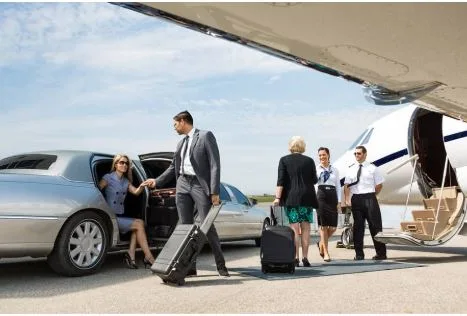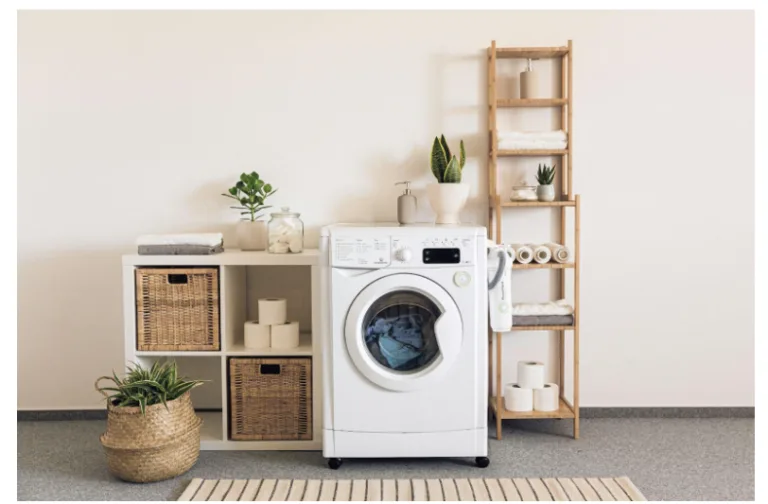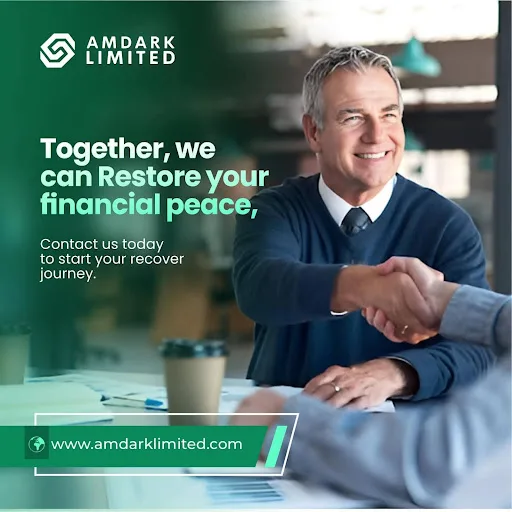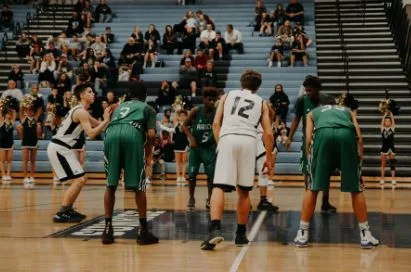The Definitive Guide to Finding the Right Class B RV for Sale
So you’re thinking about picking up a class B RV for sale, huh? Excellent choice. These nimble, well-equipped motorhomes hit that sweet spot between full-size rigs and compact vans perfect for folks who want freedom, convenience, and something a little easier to handle than a 40-foot behemoth. If you stick with me here, I’ll walk you through what to look for, how to evaluate listings, what pitfalls to avoid and the things that make a class B stand out in the sea of “RVs for sale”.
What’s a Class B RV, Anyway?
Let’s kick off with definitions because it matters. A “class B RV” essentially means a camper van style motorhome, built on a van or large cargo-van chassis, with all living amenities tucked into the body of the van.
Some key features you’ll see:
- Compact length often 17 to 24 feet or so.
- Built-in kitchen, bathroom (or “wet bay”), sleeping area all within the van.
- Higher maneuverability, easier parking most campers agree it feels closer to driving a van or large SUV.
- No massive slide-outs (or very minimal) so you’re trading a bit of interior volume for simplicity and lower maintenance.
Now why this matters when you’re looking at listings: because when you see “class B RV for sale”, you’re expecting this compact, van-lifestyle vibe, not a full bus-style motorhome with multiple rooms. Knowing what you’re searching for helps cut through the clutter.
Why Buy a Class B RV? The Appeal of the Smaller Motorhome
Alright so you might wonder: “What’s the big deal with class B? Why not go bigger?” Fair question. Let’s talk real-world appeal (and some trade-offs) so you can decide if it’s the right fit for you.
The good stuff
- Easy to drive & park. Because you’re working with a van chassis (e.g., Jayco, Winnebago, or Airstream built on a platform like Ram ProMaster, Ford Transit, Mercedes-Sprinter), you’re significantly more nimble than a big Class A.
- Stealthy and flexible. You can park in more places, access tighter roads, often navigate campsites or urban streets easier.
- Lower overall upkeep? In many cases maintenance costs are less, fuel consumption better, and you’re dealing with fewer subsystems than a huge motor-coach.
- Lifestyle fit. If you’re a couple, solo traveler, or minimalist family, the class B speaks your language. It’s “van life” meets motorhome comfort.
What you trade off
- Space is tighter. Everything is compressed. Storage, living room, privacy these are more limited. It’s compact living on wheels.
- Sleeping capacity often smaller. While you can find 4-sleep setups, most class B’s aren’t built for 8-10 passengers like some larger RVs.
- Less “luxury” head-room. You may sacrifice things like large slide-outs, huge bathrooms, expansive living halls. If you’re used to a house-size RV, you may feel the difference.
- Resale & market issue. Because they’re popular, prices can climb and selection can be competitive so you gotta shop smart.
Still if you’ve got the right mindset, a class b rv for sale can be an outstanding pick.
How to Hunt for a Class B RV for Sale: Listing Checklist
When you’re browsing through listings online marketplaces, dealer inventory, private sellers here’s your battle-plan. I’ve used this as a dealer-consultant/enthusiast, so you’ll get honest pointers.
1) Know your budget & usage
Ask: Are you buying for occasional weekends, full-time living, trips across continents (ok maybe not continents if you’re in Pakistan, but you get the idea)? That drives your budget.
- New class B’s (well-equipped) are pricey. Used units are more affordable but bring age & wear.
- Costs beyond purchase: insurance, RV registration (depending where you buy/bring it), maintenance, camping fees, fuel.
- Remember: compact doesn’t mean cheap upkeep; engines, chassis, living systems still need care.
2) Check the chassis and manufacturer history
Since a class B is built on a van/chassis but converted into a motorhome, you’re dealing with two things: the base van and the build.
- Is the van platform common/easily serviceable (e.g., Ford Transit, Ram ProMaster, Mercedes)? As one source says: “FWD or AWD chassis of ProMaster, Ford Transit, Mercedes-Sprinter.”
- Who did the conversion? Are they reputable? How old is the build? How was maintenance handled?
- Is there documentation of service, warranty (if still active), recalls addressed?
3) Layout and livability
What do you really need inside? Think about real use sleeping zones, kitchen, bathroom, storage, comfort when you’re parked.
- Does the listing show floor-plans? Photo clarity?
- Is the bathroom usable or just a wet-tub with little space?
- Kitchen: stove, fridge, microwave? Tank sizes for water, grey/black water?
- Storage: overheads, exterior compartments, roof access?
- Headroom and movement: can you stand? Is the space tight?
- Towing: many class B’s can tow some small trailer or vehicle but limits apply.
4) Mechanical & systems check
Because you’re buying a vehicle that’s also a home, you’ve got a long systems list.
- Engine/mileage: how many miles on the van chassis? Diesel vs petrol?
- Living-systems: electrical (12 V/120 V/shore power), batteries, solar (if present), plumbing, tanks.
- Water damage or roof leaks: Vans convert poorly if sealed badly. Inspect ceilings, corners, around windows.
- Service records: van engine, brakes, tires, conversion elements.
- Roof condition & height: Is the van height too tall for what you expect to park under?
- Emissions/registration: If you import or buy used, check legality for your region (especially outside the U.S.).
5) Price vs market value
Check what comparable class B RVs for sale are going for. For example:
- On one listing site, thousands of class B units are listed: Over 4,900 new + 3,600 used in one inventory.
- Check age, condition, mileage, amenities.
- Negotiation: Be realistic about wear & tear, previous usage (full-time vs occasional), upgrades or modifications.
6) Location & shipping/import considerations
Since you’re in Hyderabad, Pakistan, you’ll want to factor in import-costs, shipping, modification to local specs (if you’re buying overseas), duty/taxes, registration in Pakistan.
- Is the class B available locally, or will you import?
- If importing: shipping logistics, right-hand drive vs left-hand drive, local servicing.
- Local support: Are there workshops in your region familiar with these conversions? If the chassis is Mercedes-Sprinter etc., find parts availability.
What to Ask When You See a Listing 10 Critical Questions
When you’re on the phone or viewing the listing, these questions help separate “meh” from “worth serious consideration”.
- How many miles / hours on the chassis engine and what fuel type?
- What is the service and maintenance history (van + conversion)?
- How many previous owners? Was it used full-time (which adds wear) or part-time?
- Are all the systems working: fridge, stove, heating/AC, plumbing, tanks?
- Any history of leaks, roof repairs, water damage?
- What’s the sleeping configuration how many can it comfortably accommodate?
- What’s the tank capacity for fresh/gray/black water? How is the battery/solar setup?
- What tires/axles/chassis condition? When were the last brakes/tires replaced?
- What’s included: bike racks, awning, towing hitch, extras?
- Can I have a pre-purchase inspection by a certified RV mechanic (ideally independent)?
If the seller hesitates on most of these walk away or negotiate hard.
Common Mistakes Buyers of Class B RVs Make
We all learn the hard way. Here are some pitfalls I’ve seen repeatedly don’t let them trip you up.
- Overestimating living space: “It’s compact but when you have two adults + kids + pets, space matters.” Many buyers get excited by the van-look, then regret the cramped storage or narrow bathroom.
- Ignoring servicing costs: The conversion side often gets overlooked just because the engine is fine doesn’t mean the plumbing/electrical is in top shape.
- Forgetting parking/height clearance: The van may be tall. Can you park at your campsite, under tree cover, in your local garage?
- Not checking import/service support: If you buy from outside your country, parts and service get tricky.
- Falling for “luxury luxury” without budget: Some class B models come decked out in everything from lithium batteries to off-grid solar to AWD. These cost significantly more (buy + maintain). Make sure you’re prepared for that lifetime of ownership.
- Neglecting inspection/testing: Often buyers assume “if it runs fine now” it’ll be fine but hidden issues (leaks, chassis fatigue) can cause huge problems.
What to Expect Price-Wise for a Class B RV for Sale
While every unit is different, here’s a rough ballpark and what affects pricing.
- Entry-level used class B (older year, higher miles, basic amenities) might run tens of thousands USD. For example on listing sites you’ll see used units in the US from maybe $30,000–$60,000+ depending on condition.
- Newer, well-equipped class B’s (premium chassis, low miles, full amenities) can easily push into $100,000+ territory.
- Features that raise prices: diesel engine, 4×4/AWD, off-grid power (solar, lithium), high-end conversion brand, low mileage, full warranty.
- Your location matters: shipping, import duties, local market scarcity all affect final cost.
- Don’t forget: Budget for registering, insuring, maintaining, parking/storage, fuel.
Bottom line: be realistic if the listing seems “too good to be true” it often is. Bring your shopper-hat and your detective mindset.
Choosing the Right Floor Plan & Features for You
The mechanics matter but what you’ll really appreciate is how you’ll live in the RV. Here’s how to sort what matters.
Living and sleeping layout
- Do you need a dedicated bed, or is the couch/sofa-bed OK?
- Is the bathroom separate, or just a wet bath combo? Do you care?
- Headroom: Can you stand comfortably? Taller people often overlook this.
- Storage: Where will your gear (camping gear, clothes, bikes) go?
- Dining/work area: Will you use the table or desk inside? Needs to be usable.
Kitchen and amenities
- Fridge size, stove burners, microwave/oven?
- Fresh water tank size, grey/black tank capacity. (If you’ll boondock/outdoor a lot, bigger tanks matter.)
- Heating/air-conditioning if you go cold or hot climates, make sure system is up to it.
- Exterior versus interior access: awning, ladder, roof rack for gear/bikes.
Drive & chassis features
- Engine size/fuel type: Diesel vs Gas. Diesel often costs more upfront, but has longevity.
- Drive system: Are you getting AWD/4×4 if you plan off-road or mountainous terrain?
- Towing capacity: Will you tow a small car, trailer, boat? Check specs.
- Fuel efficiency: Think realistically less than a van, more than a car.
- Maintenance accessibility: Can you find mechanics for the chassis in your region?
Off-grid capability
If you plan boondocking (no hookups), check:
- Solar panels + battery bank (lithium or AGM)
- Inverter, generator if needed
- Tank capacities for self-sufficient days
- Ventilation, insulation (especially if you’ll travel in hot or cold climates)
How to Evaluate Listings With Your Eyes Open
When you pull up a “Class B RV for sale” listing, you want to know: “Is this a good deal? Are there hidden issues?” Try this step-by-step.
- Photos & video: Review them carefully. Look for signs of water damage (stains on ceiling/walls), unnatural gaps, mismatched finishes, worn tires, rust or corrosion on chassis.
- Mileage & hours: Check the van chassis odometer, engine hours if diesel. Very high hours might signal more imminent maintenance.
- Systems status: If it’s used, ask for proof that plumbing, electrical worked. Check for posted issues.
- Inspection: Insist on a pre-purchase inspection preferably by someone familiar with RVs and van conversions. List out items from the inspection and factor any necessary repairs into your offer.
- History & documentation: Maintenance records, insurance claims, accidents, any roof repair/leak history.
- Test drive & camping trial: Drive the vehicle. Does it handle well? Listen for weird noise. Park it somewhere, run the living systems (fridge, lights, water pump) for an hour stay.
- Title & registration status: Especially important if you’re importing, or buying across states/countries. Make sure there are no liens, that the title is clean.
- Negotiation buffer: If everything checks out, you still might want a budget for “unexpected” new tires, appliances, sealing the roof, etc.
Importing / Buying Abroad Things to Know
Since you’re in Pakistan (or considering options globally), a few extra considerations.
- Shipping & duties: Shipping a class B from the U.S. or Europe into Pakistan will incur shipping cost, port charges, customs duties, possibly conversion to right-hand drive or local compliance.
- Parts/service in Pakistan: Some chassis may require European parts (e.g., Mercedes-Sprinter) which can be expensive or delayed. Ensure local service shops can handle your chosen brand.
- Climate adaptation: Pakistan’s heat/humidity (and maybe dust) may necessitate better insulation, A/C capacity, corrosion protection. A class B originally built for U.S. conditions might need tweaks.
- Registration & insurance: Local law may impose different vehicle class registration. Verify you’ll be able to register the RV locally and what insurance availability is.
- Resale market: Make sure you’re comfortable with long-term ownership since resale value may depend heavily on condition, service history, and local demand.
- Warranty & guarantees: Used units may have void warranties; you might need to factor full maintenance out-of-pocket.
Smart Features & Upgrades Worth Considering
When you’re reviewing “class B RV for sale” options, keep an eye out for these value-add features. If they’re present, they often make a big difference in everyday use (and long-term happiness).
- Solar panels + lithium battery bank: If you want off-grid flexibility, these pay dividends.
- Upgraded insulation / sound-deadening: Makes the van quieter and more comfortable.
- All-wheel drive or 4×4 chassis: For rougher terrain, remote access, mountain roads.
- Exterior gear/accessories: Awning, bike rack, roof ladder, roof box for storage.
- Smart systems & automation: Remote monitoring of tanks, battery state, mobile connectivity.
- Quality kitchen/bathroom finishes: If you’ll spend extended periods in it, comfort matters.
- Efficient floor-plan and clever storage: Think fold-away bed, multi-use furniture, hidden compartments.
- Tow hitch + sufficient capacity: If you plan to carry a car, jet ski, small trailer, check specs.
- Low profile/height: If you want to park in standard garages or drive under height-limited areas. Smaller height = less stress.
When these are present, you may pay more upfront but they typically pay off in better experience and resale value.
What to Do After You Buy Getting Ready for Adventure
Congratulations you found your class B RV for sale, you closed the deal. Now what? Here’s your quick post-purchase checklist to make sure you’re set for road-life.
- Full service check: Even if the seller said “recent service”, get a full check again: engine, brakes, tires, living systems.
- Roof/waterproofing inspection: Before you hit rainy weather, inspect the roof, windows, seals, gutters. Fix any leaks.
- Learn your systems: Batteries, inverter, tanks, plumbing make sure you know how they work. Read manuals or ask previous owner.
- Stock essential spare parts: Tires, belts, fuses, water pump, hose clamps things you can fix roadside.
- Practice camping in it: Try one short weekend trip first. Sleep in it, use the kitchen/bath, check comfort. Adjust layout, storage as you learn.
- Register insurance: Make sure vehicle registration, insurance (especially RV coverage), and any local compliance are all sorted.
- Plan for storage/parking when not in use: Even if compact, you’ll still need safe storage, security, maintenance when idle.
- Start a maintenance log: Track mileage/hours, servicing, repairs. Good logs help resale, value, and your peace of mind.
Final Thoughts: Is a Class B RV for Sale the Right Fit for You?
Let’s wrap this up with some honest talk. Buying a class B RV is awesome if you like the idea of being mobile, spontaneous, comfortable without going full-large rig. It’s part vehicle, part home, part freedom machine. But it isn’t for everyone. If you imagine tons of space, sprawling living rooms, large families, you might feel slighted by the compactness.
If your goals are: 1) manageable size and driving, 2) serious living amenities, 3) flexible lifestyle (weekends, long trips, maybe full-time), then yes, picking one of the many “class B RV for sale” listings out there could be a smart, fun choice.
Be realistic about budget, service, layout, usage. Do your homework. Inspect deeply. Know what you’re buying and why. And when you find the one and you know you found the one the open road will feel mighty good.
One last thing: don’t let the perfect get in the way of the good. Many buyers endlessly search for “the best deal” and forget to live in it. Once you’ve ticked the major boxes, hit the road.





